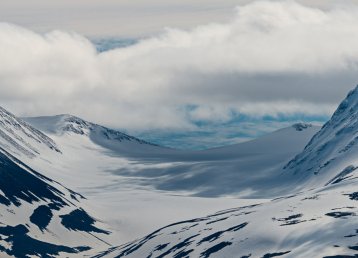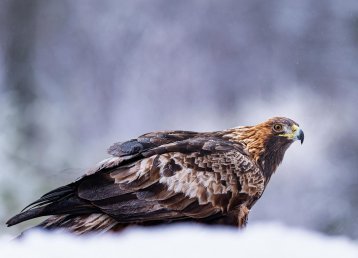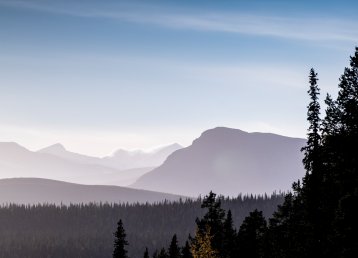The Sámi language is a Finno-Ugric language that is related to both Finnish and Hungarian. It’s a language with many different expressions and synonyms for nature and reindeer husbandry.
The Sámi language can be divided into three main language areas: Eastern Sámi, Southern Sámi and Central Sámi. These three language areas may be further divided into varieties and ultimately, individual languages. Sámi people in Russia speak Eastern Sámi, Central Sámi is spoken in Finland, Norway and Sweden, and Southern Sámi in Norway. However, these divisions are only theoretical since people move all over Sápmi and the varieties change over time.
The varieties
In Sweden, the most common varieties are Northern Sámi, Lule Sámi, Arjeplog Sámi, Southern Sámi and Ume Sámi. The dissimilarities in the different types are not unlike the differences in Swedish, Norwegian and Danish. But the differences in Sámi varieties grow with geographical distances and varieties far away from each other, have as much in common as the Swedish and German language has.
Also read
Kärkevagge, the secret stone valleyHiking Kungsleden
Kungsleden, the King’s trail runs from Hemavan to Abisko in the Swedish mountains amd is one of the world’s most popular hiking trails. The 450-kilometer long trail will take you through the Vindelfjällen nature reserve, the Laponia World Heritage, four national parks and the headwaters of Sweden’s four remaining national rivers.
By the look of things
If you can understand some Sámi words; names of places, mountains, rivers – you can probably paint a picture of the mapped landscape and grasp the value of the land out of a sustenance perspective; grounds for fishing, hunting, reindeer husbandry or berry picking.
A place can also be named after a person or happening, like Nikkaluokta, which means Nikka’s Bay and written as Nihkkáluokta in Northern Sámi.
Characteristics
The mountains, valleys and streams are usually named after their characteristics; they are terrain descriptive. A mountain with the last element ‘-bakti/bakte’ is with most certainty steep, while the last element ‘-tjvadda’ is a mountain without escarpments, i.e. the opposite of -bakti.
Usually, names are put together, such as Badje and lánnda, Badjelánnda (Padjelanta in Swedish), meaning the higher land.
Also read
Hiking in PadjelantaRoom to breathe
Hanneke and Arne set out on a journey to find out what it would be like to relocate to the north. One year later they are still enjoying life in eight seasons.
Kebnekaise, not what it seems
Giebmegáisi – or Kebnekaise – means high mountain peak with a cauldron, but Kebnekaise doesn’t have a cauldron shaped peak as the name suggests, while the closest mountain Duolbagorni/Tolpagorni has. Over a hundred years ago, Duolbagorni was called ‘Kebne kaise’ or ‘our cauldron’ in Northern Sámi but was renamed. The theory is that the first expeditions that reached the Kebnekaise massif just assumed that the map pointed out the biggest mountain, not the one with a distinctive characteristic, and gave Duolbagorni a new name.
So whether you are hiking in the Swedish Lapland mountains or just driving through the northern parts, knowing the meaning of some words might come quite handy. Road signs are usually written in both Swedish and Sámi – and in some parts of Swedish Lapland, in Meänkieli which is another minority language. But that is an entirely different story.
Learn more
jávri/jávrre = lake
bákti/bákte = (steep) cliff
dievvá = hill
gorži/gårttje = waterfall
johka/jåhkå = creeak, stream
luokta = bay
njárga/njárgga = headland
stuor/stuorrá = big or large
čohkka/tjåhkkå = (mountain) peak
unni/unna = small
vággi/vágge = valley
várri/várre = mountain


























